-
Car Reviews
- All reviews
- Midsize SUVs
- Small cars
- Utes
- Small SUVs
- Large SUVs
- Large cars
- Sports SUVs
- Sports cars
- Vans
Latest reviews
- Car News
-
Car Comparisons
Latest comparisons
- Chasing Deals
Ford has equipped its Escape midsize SUV with a frugal plug-in hybrid powertrain that thankfully hasn’t affected its dynamic excellence
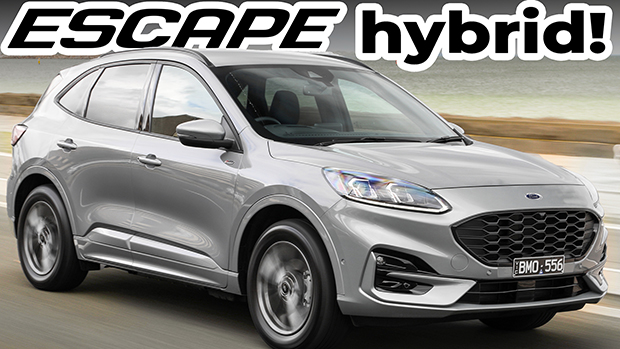
Ford has brought yet another entrant to the hybridised midsize SUV category with the addition of the plug-in hybrid Escape ST-Line that starts from $53,455 before on-road costs (until 1 July 2022, when the price will climb by $1000).
The hybrid Escape has had a fairly long gestation period following the 2.0-litre turbo-petrol Escape’s Australian release in October 2020. Eighteen months later, there’s now a total of four Escape variants, including the plug-in hybrid on test that’s equipped with an eCVT transmission from Ford (rather than the petrol’s eight-speed automatic), boasting a combined fuel-consumption figure of 1.5L/100km and an EV-only range of over 50km.
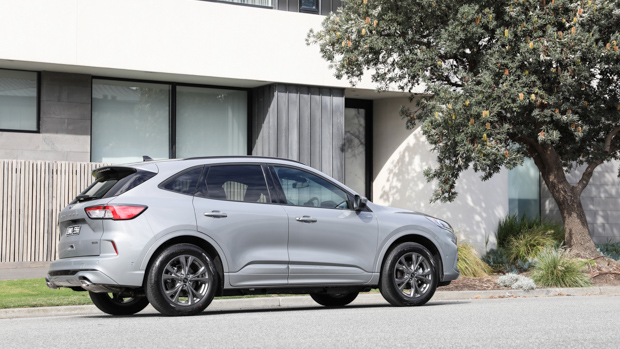
The circa-$16K price jump from the equivalent ST-Line petrol front-driver ($37,990) is also offset by some extra kit in the PHEV – namely the 10-way electric front driver’s seat with lumbar and standard-fit 10-speaker B&O Play Stereo.
The Escape scored an invite to the 2021 Chasing Cars Midsize SUV Megatest and impressed against fierce rivals including the Toyota RAV4 Edge Hybrid, Volkswagen Tiguan 162TSI R-Line and Subaru Forester Hybrid-S thanks to quality damping, great roadholding and a gutsy 183kW 2.0-litre turbo-petrol engine – though its grunt ultimately came at the cost of decent fuel consumption.
In theory, then, the hybrid’s 1.5L/100km ADR combined consumption figure should address the Escape’s lust for unleaded petrol.
The Escape’s hybrid powertrain comprises a 2.5-litre naturally-aspirated four-cylinder engine running in Atkinson cycle mode (just like a RAV4 hybrid) and an electric motor for a total power output of 167kW (with no torque figure quoted).
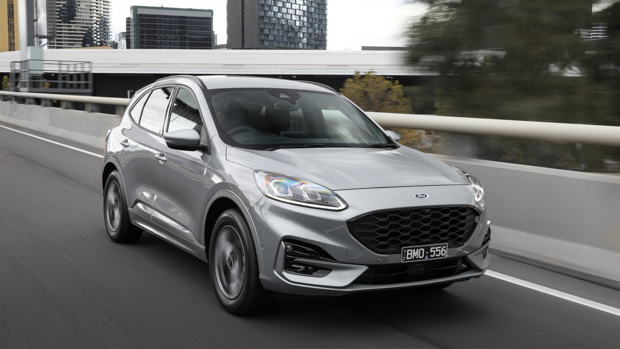
Ford has developed its own CVT for this application and in practice the system works very smoothly, with changeover from electric to petrol power almost imperceptible. The 2.5-litre petrol engine is also impressively insulated at anything but full-throttle and the electric motor has adequate grunt to get the Escape off the line to briskly join moving traffic.
Weighing in at 1810kg, the Escape PHEV is 189kg heavier than a FWD petrol Escape, which blunts its claimed 0-100km/h sprint from 6.6 seconds to 9.2 seconds. But the punch of instant torque from the electric motor means the Escape PHEV feels quicker than its performance time suggests when nipping through traffic in the real world.
One of the star’s of the Escape show has been its excellent ride and handling balance. The petrol cars have gorgeous damping that controls body movement brilliantly, yet are still able to round off sharp-edged bumps – and thankfully the same is true for the chubbier hybrid version.
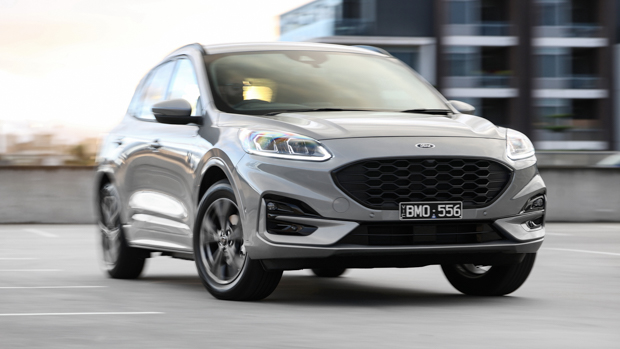
This is also helped by Ford’s choice to keep the ST-Line plug-in riding on 18-inch wheels shod in squishy 255/60R18 Continental Eco Contact 6 tyres which add a helpful level of plushness when compared to the Vignale’s crashy 20-inch alloys with sportier Continental rubber.
The choice to retain higher-profile tyres doesn’t harm the Escape hybrid’s roadholding too much though, this is still a steadfast companion that keeps body movement tightly controlled over mid-corner compressions and gives the driver options through a corner like a small hatch.
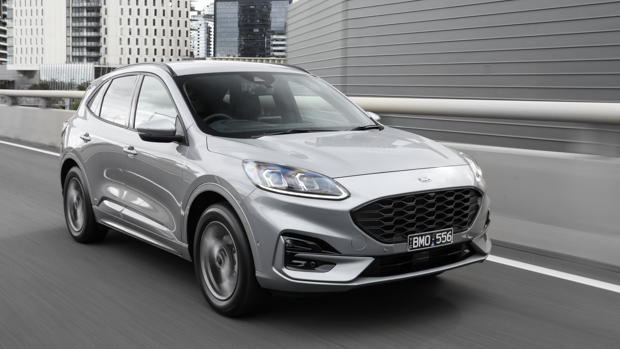
Perhaps this is down to the ST-Line’s more simple torsion beam rear suspension (the AWD petrol grades get multi-link suspension) though in practice the set-up is fantastic, and rarely displays any shortcomings.
The digital steering feel and torque steer from the Escape’s front axle can be unnerving, as can the ESC activation that seems to rattle the brake pedal mid-corner in an attempt to trim the Escape’s trajectory, which tarnish this car’s sparkle on a backroad. But if you love driving and need a midsize SUV then this might be the pick of the bunch.
On the safety front, the Escape ST-Line PHEV is equipped with the same suite as the rest of the Escape range including front AEB with pedestrian and cyclist detection, rear cross-traffic alert, lane-keep assist and blind-spot monitoring.
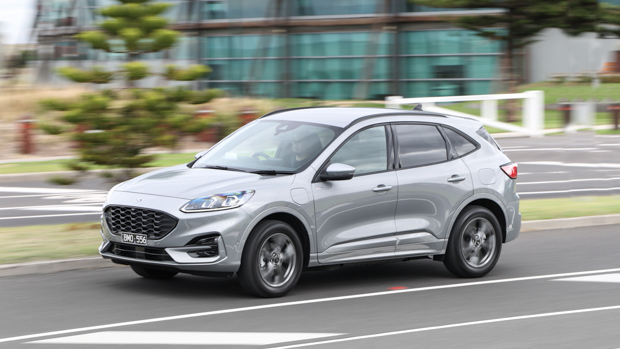
Additionally, the driver-assistance suite is impressively tuned with an easy-to-use adaptive cruise control and lane-trace assist.
Inside it’s just like the ST-Line, which means not bad but not as tech-packed as a new Volkswagen Tiguan R-Line, Kia Sportage GT-Line or Hyundai Tucson Highlander.
The centre touchscreen is responsive and the graphics are handsome, but at 8.0-inches diagonal it looks small within the real estate available. Ford also fits the Escape with a head-up display and a digital driver’s display that responds to drive modes and can show plenty of trip and song information, but has no provision to show a map.
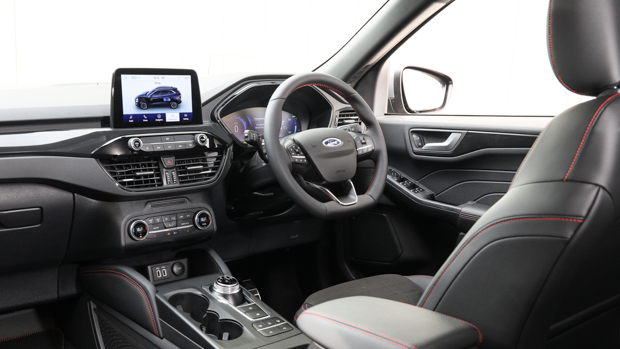
Interacting with the tech pack is simple, though, thanks to well laid-out physical shortcut buttons on the steering wheel and centre console. The HVAC controls are also physical and very ergonomic.
Ford also includes wireless charging on a rubberised pad with dividers to hold the phone in when cornering or accelerating hard, a 12-volt socket and a pair of USB ports for charging as well as wired Apple CarPlay and Android Auto.
Our test car was fitted with the $1950 ST-Line pack that adds front seat heating, hands-free electric tailgate and adaptive LED headlights. It isn’t a whole lot more money and brings niceties that the specification would otherwise feel a little lacking without, so it’s a shame Ford didn’t fit the pack as standard.
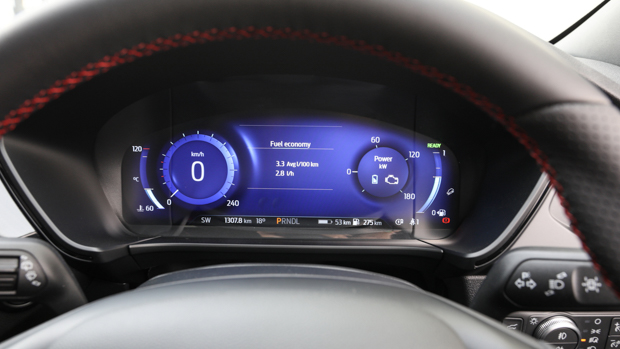
The seats themselves are appointed in a mix of suedecloth centres and vinyl bolsters with racy red stitching differentiating the Escape ST-Line from other trims. Support for the back is good, as is the Escape’s commanding driving position, though the squishy side-bolsters don’t offer as much support as the Escape’s chassis does!
Not all the materials are nice, though. The escape does have a soft-mould dash and door tops, butits faux carbon-fibre trim inserts promise more sportiness than this midsize SUV offers and the cabin construction feels flimsy – notably on the door cards and around the B-pillar where the B&O Play audio system’s powerful bass (but tinny upper registers) rattles the plastic clips.
Jump into the back and the Escape’s relatively long 4626mm body provides great second-row space. The bench is on sliders, and the backrest has three positions to either maximise comfort for rear seat passengers (I had plenty of space at 188cm) or cargo room.
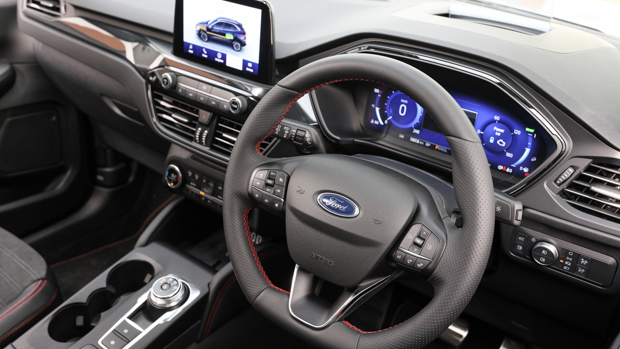
The deployable armrest is sturdy and offers two cupholders, and there’s also a pair of adjustable air vents, plus one of each USB-A and USB-C charging ports. Ford’s choice not to offer a sunroof and fit a black headliner makes the rear seats dark, though, and the door tops move to hard plastic in the back.
Load space is unchanged from the petrol Escape at 556 litres and Ford has retained a space-saver spare tyre under the floor – though there isn’t a neat storage solution for the Escape’s charging cable – and there are four tie-down points, some take-away hooks and a 12-volt socket.
The Ford Escape plug-in hybrid’s combined fuel consumption rating is 1.5L/100km, markedly better than the 8.6L/100km claim for the front-drive Escape turbo-petrol.
To test the true efficiency of a plug-in hybrid vehicle is more complex. Running in electric-only mode (this can be selected by the drive-mode button behind the Escape’s rotary gear selector) in urban testing, the Escape PHEV returned an impressive 16kWh/100km according to its trip computer.
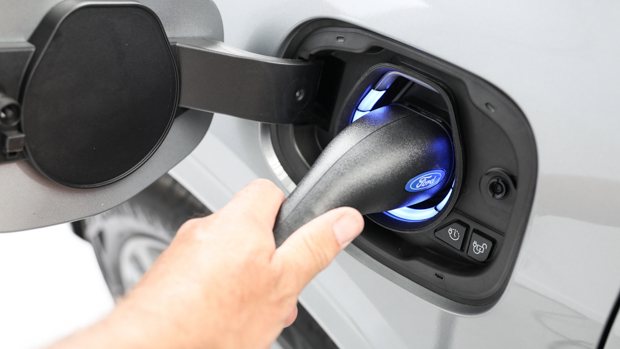
Ford only quotes the Escape’s gross battery capacity (14.4kWh), and its ‘50km+’ range estimate is fairly conservative.
Our rated efficiency saw the Escape’s on-board computer estimating we’d achieve around 65km from the next full charge, which takes seven hours on a home three-pin socket, or about three hours using a 3.6kW wallbox.
For similar money though, the Polestar 2, Hyundai Kona Electric and Tesla Model 3 offer all-electric motoring with the ability to fast-charge.
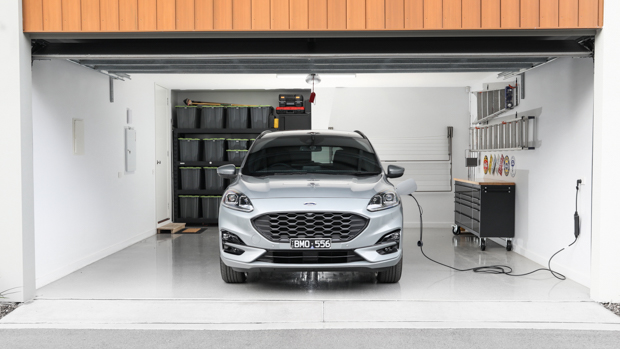
As for running in hybrid mode, with its battery fully discharged (save for top-ups from the regenerative braking system), the Escape returned a 4.9L/100km efficiency figure for a total combined test result of 3.0L/100km.
Even with a discharged lithium-ion battery, the Escape proved far more efficient than the heavy (but faster) Peugeot 3008 GT Sport plug-in hybrid and more expensive BMW X3 30e plug-in hybrids we’ve tested recently at Chasing Cars.
In Australia, Ford caps the Escape’s first four services at $299 each for a four year/60,000km maintenance cost of $1296. Intervals are 12 months/15,000km and the Escape is backed by a five-year/unlimited kilometre warranty.
It’s always great to have another hybrid midsize SUV to choose from. Toyota has proven the success of this recipe time and again with its ever-popular RAV4 – so is the Escape good enough to steal some sales?
Well the plug-in hybrid recipe will fit perfectly into some people’s lives thanks to its shortish all-electric range that’s usually plenty for the average daily commute … however it’s up to the owner to keep on top of charging to make the most from this recipe.
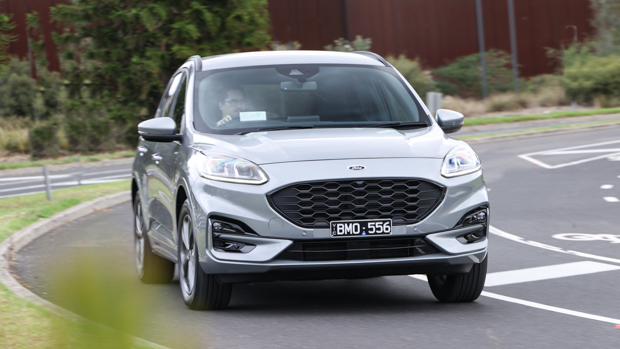
The Escape hasn’t lost too much of its excellent roadholding and exploitable driving dynamics from the petrol car, but it does retain the same cabin design which looks a little dated and uninspiring next to fresher rivals.
Whether or not the plug-in hybrid is really worth the $16K premium over an equivalent, faster petrol-powered Escape is more difficult to quantify.
It will still take about 130,000km of Escape ownership (at $1.89 for 95RON petrol) to offset the initial purchase cost, so if you’re in it for the long haul then the plug-in hybrid may be worth it – it’s certainly a polished example of this powertrain style.
Variant tested ST-LINE PHEV (FWD)
Key specs (as tested)
About Chasing cars
Chasing Cars reviews are 100% independent.
Because we are powered by Budget Direct Insurance, we don’t receive advertising or sales revenue from car manufacturers.
We’re truly independent – giving you Australia’s best car reviews.
The estimate provided does not take into account your personal circumstances but is intended to give a general indication of the cost of insurance, in order to obtain a complete quote, please visit www.budgetdirect.com.au. Estimate includes 15%^ online discount.
^Conditions Apply
Budget Direct Insurance arranged by Auto & General Services Pty Ltd ACN 003 617 909(AGS) AFSL 241 411, for and on behalf of the insurer, Auto & General Insurance Company Limited(ABN 42 111 586 353, AFSL 285 571).Because we don’t know your financial needs, we can’t advise you if this insurance will suit you. You should consider your needs and the Product Disclosure Statement before making a decision to buy insurance. Terms and conditions apply.
Indicative quote based on assumptions including postcode , 40 year old male with no offences, licence suspensions or claims in the last 5 years, a NCD Rating 1 and no younger drivers listed. White car, driven up to 10,000kms a year, unfinanced, with no modifications, factory options and/or non-standard accessories, private use only and garaged at night.
^Online Discounts Terms & Conditions
1. Discounts apply to the premium paid for a new Budget Direct Gold Comprehensive Car Insurance, Third Party Property Only or Third Party Property, Fire & Theft Insurance policy initiated online on or after 29 March 2017. Discounts do not apply to optional Roadside Assistance.
2. Discounts do not apply to any renewal offer of insurance.
3. Discounts only apply to the insurance portion of the premium. Discounts are applied before government charges, taxes, levies and fees, including instalment processing fees (as applicable). The full extent of discounts may therefore be impacted.
4. We reserve the right to change the offer without notice.